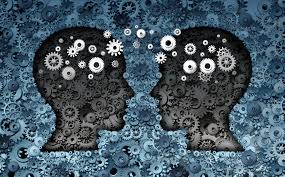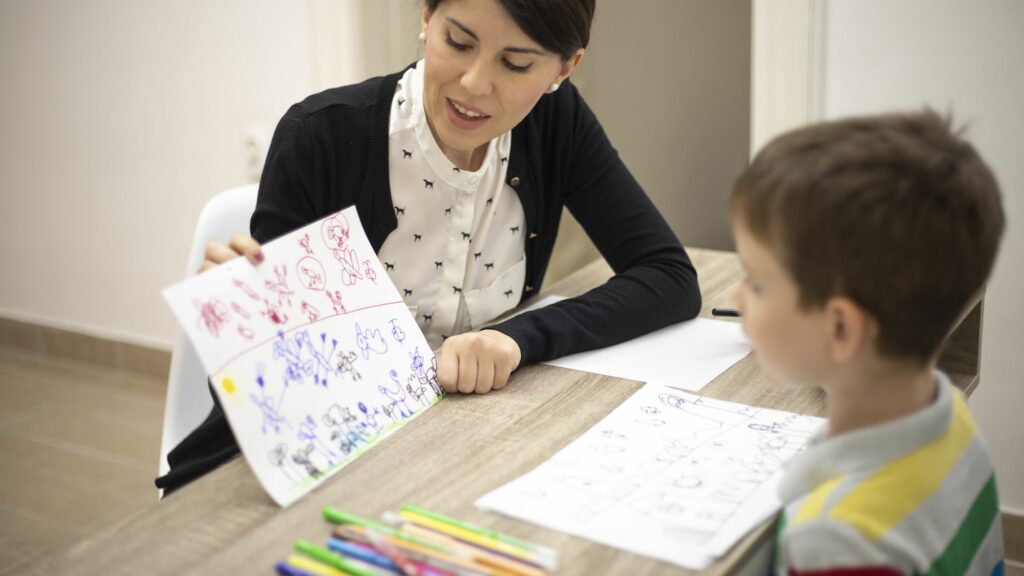Applied Behavior Analysis is the use of behavioral methods to modify behavior. This includes observing, recording, and analyzing behavior with a goal of improving on it. Applied Behavior Analysis helps kids with autism and ADHD. It helps them (and everyone) know what to do. If you are looking for more information on this topic or how to implement these strategies in your own life, read on!
Definition Of Applied Behavior Analysis

The application of behavioral techniques to change behavior is applied behavior analysis. This entails monitoring, recording, and analyzing behavior with the aim of improving it. Applied Behavior Analysis is helpful in a lot of settings. It is mostly helpful for kids who have Autism, ADHD, or other disorders. If you want to find out more about this topic or how to put these principles into practice, keep reading!
The History of Applied Behavior Analysis
John B. Watson is the founder of behaviorism and applied behavior analysis. In the early 1900s, he conducted experiments on rats and pigeons in order to understand how conditioning works. Watson was also a part of Little Albert experiment, which conditioned a baby to fear white rats.
Applied Behavior Analysis is helpful in many situations, but it is most often productive for children who have autism spectrum disorder (ASD) and attention deficit hyperactivity disorder (ADHD). If you want to gain more information on this topic or learn how to put these principles into practice, keep reading!
Uses Of Applied Behavior Analysis

- Applied behavior analysis is a therapy for children who have autism or ADHD. It is helpful in many places and with different people.
- Some of the areas where ABA has its application successfully include: education, social skills training, behavior management at home and school.
- ABA techniques are also helpful to address issues such as sleep problems or self injury.
- When it comes to the education of children with autism, ABA is helpful in several different ways. It comes into play during functional academics (such as learning how to do laundry) or academic skills like matching shapes and colors.
- ABA techniques are also applicable for social skills training at home or school when dealing with peers, teachers, siblings, etc. Behavior management means that you use schedules to help people do positive things and not negative ones. For example: if your child has a hard time going to sleep at night, you could give them stickers for every time they do it without an argument. This will make them want to get more and more of the stickers over time.
Goals Of Applied Behavior Analysis

ABA is a special way to help children with autism or ADHD. It can be used in many different settings, but is most often used in children with those conditions.
The goals of ABA vary depending upon the setting where it is being applied. In general though, behavior analysts work towards increasing positive behaviors while decreasing negative ones.
Some of the goals that may be targeted in ABA therapy include:
- Improved communication skills
- Increased social interaction
- More appropriate behaviors (reduced aggression, tantrums, etc.)
- Improved academic skills
- Better self-regulation abilities.
ABA therapy has helped autistic children and ADHD children. It helps them to reach their full potential.
Techniques For Applied Behavior Analysis
- There is a common use for Applied Behavior Analysis with children who have autism spectrum disorder or attention deficit hyperactivity disorder.
- Behavior analysts work to increase good behaviors and decrease bad ones.
- Some techniques that are frequently used in ABA include: discrete trials training (DTT), errorless learning and incidental teaching.
- For now, it is important to have a general understanding of what they are and how they can help your child!
Stay tuned for more information on Applied Behavior Analysis and the different ways it can benefit your child’s development!
How Does It Work?
Applied Behavior Analysis can be used in many different settings, but its most common application is with children who have autism spectrum disorder (ASD) and attention deficit hyperactivity disorder (ADHD).
When it comes to the education of children with autism, ABA techniques are often used for functional academics or academic skills like matching shapes and colors.
ABA Program

ABA techniques are also frequently applied for social skills training at home and school when dealing with peers, teachers, siblings etc. This is about behavior management strategies. They use a system of rewards and punishments. For example, if your child puts himself to bed without an argument, he might get a sticker. If he doesn’t put himself to bed without an argument, he might not get a sticker.
Planning And Ongoing Assessment
The goal of any ABA program is to increase positive behaviors while decreasing negative ones.
When designing an ABA program for a child, the behavior analyst will first assess the child’s current skills and deficits. Based on this information, goals will be set. They will be addressed through various techniques such as DTT or incidental teaching.
To make the program work for someone, you need to constantly see how it is going. You can’t set a plan and then not change it if it doesn’t work.
One of the benefits of using Applied Behavior Analysis is its ability to individualize treatment plans according to each child’s particular needs.
ABA Techniques and Philosophy
Applied Behavior Analysis is also frequently used for children with attention deficit hyperactivity disorder (ADHD) and autism spectrum disorder (ASD).
ABA techniques can have their application in a number of different settings: at home, school, or even the community.
ABA programs help kids with autism or ADHD by reinforcing good behavior and decreasing bad ones. This is done using stimulus control methods, such as DTT.
Discrete Trial Training Program
Behavior analysts use this technique when they design an Applied Behavior Analysis program for somebody who is struggling socially. This type of treatment is for kids who need help with social situations. It will break down the steps into smaller ones that they can do on their own without constant supervision from adults.
In this program, the child is given a set of instructions which are broken down into small components. Kids need to be rewarded with positive feedback for following these directions. They might not follow them otherwise.
Behavior analysts use a lot of different things to help children with ASD or ADHD. One is called “errorless learning”. It involves using several different techniques such as single-subject design and multiple baselines across behaviors.
Errorless Learning And Incidental Teaching Technique
Applied Behavior Analysis techniques like DTT and incidental teaching rely heavily on prompting. This means that an adult will help the kid learn how to do something over time.
This might mean that a child who is struggling with toilet training might need more prompts than a child who can complete the task independently.
It is important to note that the ABA program for a child might not work. The behavior analyst needs to keep looking at how the child is doing and make changes if necessary.
Reinforcement Schedules
When a child has ASD or ADHD, a behavior analyst might use a reinforcement schedule to help increase good behaviors and decrease bad ones.
One of the most common ways to keep a child happy is by giving them rewards every time they do something. However, this type of schedule can be less effective than it sounds because positive behaviors may decrease over time if there are no consequences for negative ones.
The other downside to using continuous reinforcement? It’s extremely expensive! For example, imagine how much candy you would need to reward your child every single time that they do something right. It will be expensive and it might make them like the rewards more than the things they are learning.
Another type of reinforcement is an interval. It works by rewarding you every time you do (a certain number) things.
This reinforcement schedule is better than continuous reinforcement because it lets the child know how long they need to wait until they get a reward. This can help to keep them motivated and focused on the desired behavior!
It can be hard to maintain a schedule like this because some kids might get upset if they do not receive their reward right away.
The last type of reinforcement schedule is called variable ratio. It means that sometimes you get a reward or praise, and other times you don’t.
Who Provides ABA Services?

Behavior analysts who provide Applied Behavior Analysis services work in a variety of different settings – such as schools, clinics, or even private practice.
It is important to find out which behavior analyst would be best for your child. You need to look at what kind of education they have and how experienced they are with this kind of work.
When looking for a provider, make sure to ask them the following questions:
- What type of training/education do they have in ABA?
- Do they have any experience working with children who have ASD or ADHD?
- Are they familiar with reinforcement schedules and errorless learning techniques?
- What type of assessments will they be doing on my child’s progress?
The best way to find a provider of ABA is to ask your family doctor or pediatrician. They will be able to tell you about providers in your area.
If you are unable to find someone through this method, however, several online resources can help!
If you can’t find what you want, it might be worth looking again. You could also contact providers in the area to see if they offer free consultations.
Evidence on ABA
Behavior analysts have been studying the effects of Applied Behavior Analysis for many years and there is a large body of evidence to support its efficacy.
A study showed that children with ABA services exhibited remarkable improvement in social skills, communication abilities, and daily living skills.
A different study published in 2009 found that ABA was more effective than other treatments for people with ASD (autism spectrum disorder). This means that ABA will help them to do well in life.
The research shows that ABA can be good for children who need more help.
Is ABA Covered By Insurance?

ABA is a treatment for autism spectrum disorder and is often covered by insurance plans.
However, it is important to check with your provider to see what services they tend to cover under your policy.
Many ABA providers offer sliding scale fees or will work with you to create a payment plan that fits within your budget.
If you are unable to afford ABA therapy, there may be other organizations in your area which provide free or low-cost services.
You need to make sure that you carefully assess a place before choosing it. You should look at the quality of the service and also see what the space looks like.
Conclusion
Applied Behavior Analysis is the application of learning principles to change behavior. An evidence-based approach has been around for decades. One can use it in different settings like schools, homes, clinics, hospitals, and prisons. ABA uses scientific techniques like reinforcement schedules to help people learn new behaviors over time. The goal of these approaches is to teach skills and build self-esteem. This includes any skill or accomplishment that makes you feel more competent or skilled. A study found that children with autism spectrum disorder improved their social abilities two years ahead of children who did not receive the intervention. Differential reinforcement contingencies were used in all phases of treatment.
If you are looking for affordable Online Counseling MantraCare can help: Book a trial therapy session


